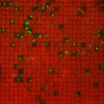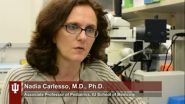(Press-News.org) Clinicians need to be sensitive and aware of the unique challenges of women's reproductive health needs in times of conflict, suggests a new review published today (4 July) in The Obstetrician & Gynaecologist (TOG).
Approximately 1.5 billion people are currently living in countries affected by conflict, fragility or large-scale violence. Women and children account for approximately 75% of those displaced by conflict and roughly 20% of those displaced are women of reproductive age and one in five will be pregnant.
This new review looks at how conflict can negatively impact all aspects of reproductive health, directly through damage to services, gender-based violence and forced displacement of populations and indirectly through reductions in the availability of basic healthcare.
The review states that gender-based violence, sexually transmitted infections (including HIV), and maternal and neonatal mortality and morbidity all flourish in times of conflict. Furthermore, the loss of access to adequate family planning and basic health services also increases reliance on traditional or harmful methods, including unsafe termination of pregnancy.
Looking at maternal mortality specifically, high rates are frequently encountered in conflict-affected populations; eight out of the ten countries with the highest maternal mortality ratios have experienced current or recent conflict. Moreover, the review notes that approximately 15% of displaced pregnant women will encounter a potentially life-threatening complication, such as haemorrhage, sepsis, obstructed labour or eclampsia.
The authors of the review therefore emphasise the importance of appropriate and timely recognition of, and response to, obstetric emergencies as the key to saving lives. However, in the context of conflict and displacement, services are often scarce, resulting in delays in reaching the care required. Furthermore, the poor security conditions, exodus of healthcare providers, lack of transport and loss of facilities result in heightened vulnerability and reduced access to life-saving interventions.
Clinicians in the UK may treat women migrating from conflict affected areas, and should therefore be sensitive to the reproductive health challenges faced by these women, the review states. The authors conclude by saying that awareness and recognition by medical staff to these issues may be beneficial to the women's care and aid them in accessing the appropriate services.
Dr Benjamin Black, Specialist Trainee in Obstetrics and Gynaecology currently working with Medecins Sans Frontieres in Sierra Leone, and lead-author of the review said:
"In an increasingly globalised world a working knowledge of reproductive health during conflict allows clinicians to approach subjects sensitively with women, building a relationship of trust and understanding, allowing women to gain access to services they need.
"Recognition and response to the reproductive health needs of women during humanitarian emergencies has advanced. However, much more needs to be done around the time of the crisis and post-crisis, and more awareness is needed of these issues."
Jason Waugh, TOG Editor-in-Chief added:
"For twenty years, reproductive health has been formally recognised as a human right and this review highlights the importance of providing adequate services in conflict and displacement settings.
"Clinicians working in the UK will come across women who have experienced conflict zones who may have certain health needs as a result. Therefore, an understanding of the difficulties they may have faced will enhance the care given."
INFORMATION:
Effects of conflict on women's reproductive health need to be managed sensitively
2014-07-04
ELSE PRESS RELEASES FROM THIS DATE:
New discovery in living cell signaling
2014-07-03
A breakthrough discovery into how living cells process and respond to chemical information could help advance the development of treatments for a large number of cancers and other cellular disorders that have been resistant to therapy. An international collaboration of researchers, led by scientists with the U.S. Department of Energy (DOE)'s Lawrence Berkeley National Laboratory (Berkeley Lab) and the University of California (UC) Berkeley, have unlocked the secret behind the activation of the Ras family of proteins, one of the most important components of cellular signaling ...
Compounded outcomes associated with comorbid Alzheimer's disease & cerebrovascular disease
2014-07-03
LEXINGTON, Ky. (July 3, 2014) -- Researchers from the Sanders-Brown Center on Aging at the University of Kentucky have been able to confirm anecdotal information on patients with both Alzheimer's disease (AD) and cerebrovascular disease (CVD) using mouse models in two different studies.
The findings of these two studies, which were recently published in Acta Neuropathologica and Alzheimer's Research & Therapy, have potentially significant implications for patients with both disorders.
Both papers studied CVD in Alzheimer's disease mouse models using different lifestyle ...
Biochemical cascade causes bone marrow inflammation, leading to serious blood disorders
2014-07-03
VIDEO:
Like a line of falling dominos, a cascade of molecular events in the bone marrow produces high levels of inflammation that disrupt normal blood formation and lead to potentially deadly...
Click here for more information.
INDIANAPOLIS -- Like a line of falling dominos, a cascade of molecular events in the bone marrow produces high levels of inflammation that disrupt normal blood formation and lead to potentially deadly disorders including leukemia, an Indiana University-led ...
How knots can swap positions on a DNA strand
2014-07-03
Physicists of Johannes Gutenberg University Mainz (JGU) and the Graduate School of Excellence "Materials Science in Mainz" (MAINZ) have been able with the aid of computer simulations to confirm and explain a mechanism by which two knots on a DNA strand can interchange their positions. For this, one of the knots grows in size while the other diffuses along the contour of the former. Since there is only a small free energy barrier to swap, a significant number of crossing events have been observed in molecular dynamics simulations, i.e., there is a high probability of such ...
From pencil marks to quantum computers
2014-07-03
Introducing graphene
One of the hottest materials in condensed matter research today is graphene.
Graphene had an unlikely start: it began with researchers messing around with pencil marks on paper. Pencil "lead" is actually made of graphite, which is a soft crystal lattice made of nothing but carbon atoms. When pencils deposit that graphite on paper, the lattice is laid down in thin sheets. By pulling that lattice apart into thinner sheets – originally using Scotch tape – researchers discovered that they could make flakes of crystal just one atom thick.
The name ...
Payback time for soil carbon from pasture conversion to sugarcane production
2014-07-03
The reduction of soil carbon stock caused by the conversion of pasture areas into sugarcane plantations – a very common change in Brazil in recent years – may be offset within two or three years of cultivation.
The calculation appears in a study conducted by researchers at the Center for Nuclear Energy in Agriculture (CENA) of the University of São Paulo (USP) in collaboration with colleagues from the Luiz de Queiroz College of Agriculture (Esalq), also at USP. The study also included researchers from the Federal Institute of Alagoas (IFAL), the Brazilian Bioethanol Science ...
New satellite data like an ultrasound for baby stars
2014-07-03
An international team of researchers have been monitoring the "heartbeats" of baby stars to test theories of how the Sun was born 4.5 billion years ago.
In a paper published in Science magazine today, the team of 20 scientists describes how data from two space telescopes – the Canadian Space Agency's MOST satellite and the French CoRoT mission – have unveiled the internal structures and ages of young stars before they've even emerged as full-fledged stars.
"Think of it as ultrasound of stellar embryos," explains University of British Professor Jaymie Matthews, MOST ...
A young star's age can be gleamed from nothing but sound waves
2014-07-03
VIDEO:
In a young region like the so-called Christmas Tree Cluster, stars are still in the process of forming. A star is 'born' once it becomes optically visible (bottom right). During...
Click here for more information.
Determining the age of stars has long been a challenge for astronomers. In experiments published in the journal Science, researchers at KU Leuven's Institute for Astronomy show that 'infant' stars can be distinguished from 'adolescent' stars by measuring the acoustic ...
Sweet genes
2014-07-03
Edmonton, July 3, 2014 – A research team at the Faculty of Medicine & Dentistry at the University of Alberta have discovered a new way by which metabolism is linked to the regulation of DNA, the basis of our genetic code. The findings may have important implications for the understanding of many common diseases, including cancer.
The DNA wraps around specialized proteins called histones in the cell's nucleus. Normally, histones keep the DNA tightly packaged, preventing the expression of genes and the replication of DNA, which are required for cell growth and division. ...
NASA sees rainfall in newborn Tropical Depression 8W
2014-07-03
Powerful thunderstorms in some areas of newborn Tropical Depression 08W in the Northwestern Pacific Ocean were dropping heavy rainfall on July 3 as NASA's Tropical Rainfall Measuring Mission (TRMM) satellite passed overhead.
The eighth depression of the Northwestern Pacific Ocean season formed on July 3 at 0900 UTC (5 a.m. EDT). It was located near 10.0 north latitude and 144.3 east longitude about 240 nautical miles south of Andersen Air Force Base, Guam. Tropical Depression 08W or TD08W had maximum sustained winds near 30 knots (34.5 mph/55.5 kph) and it was moving ...





